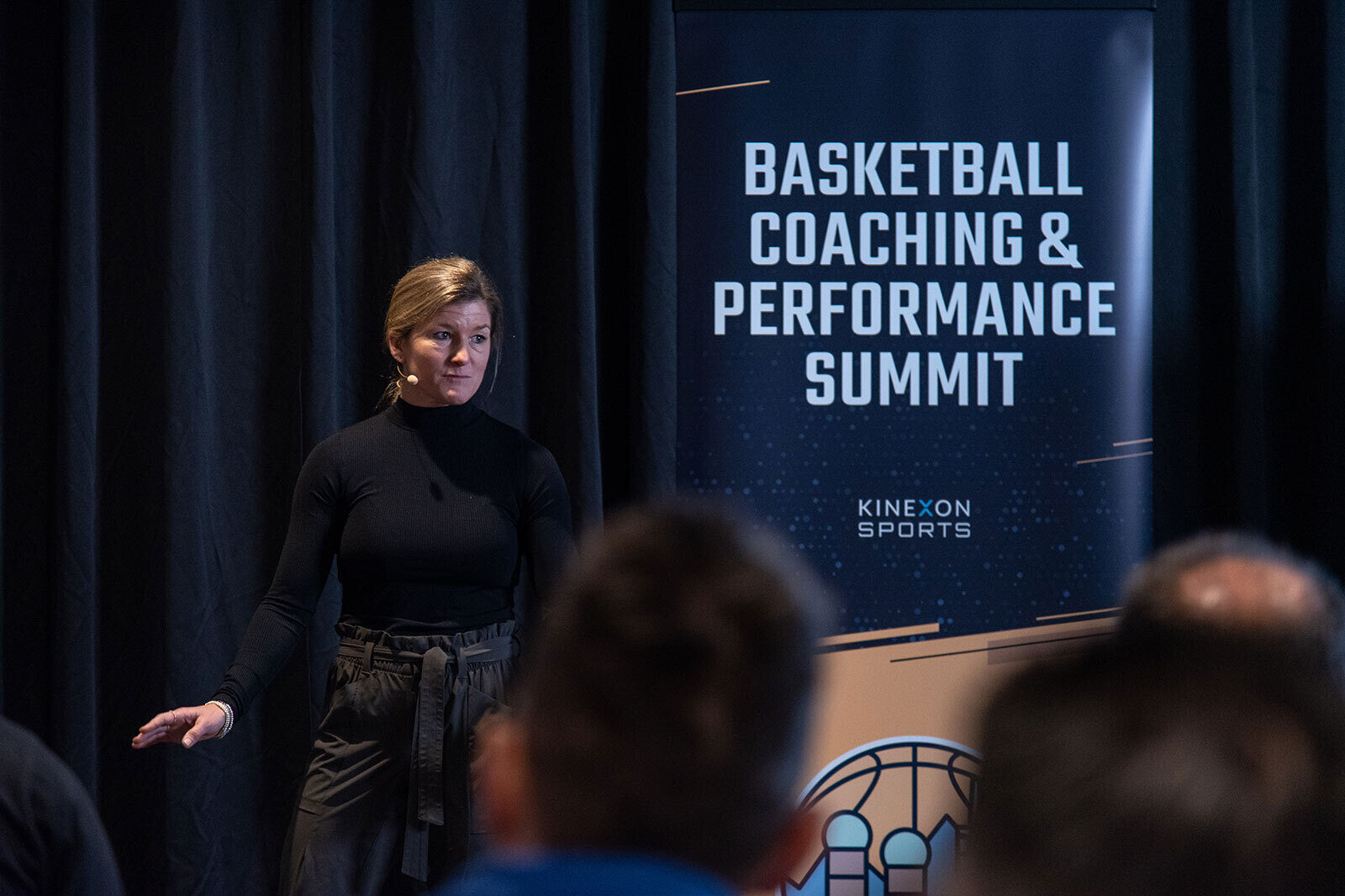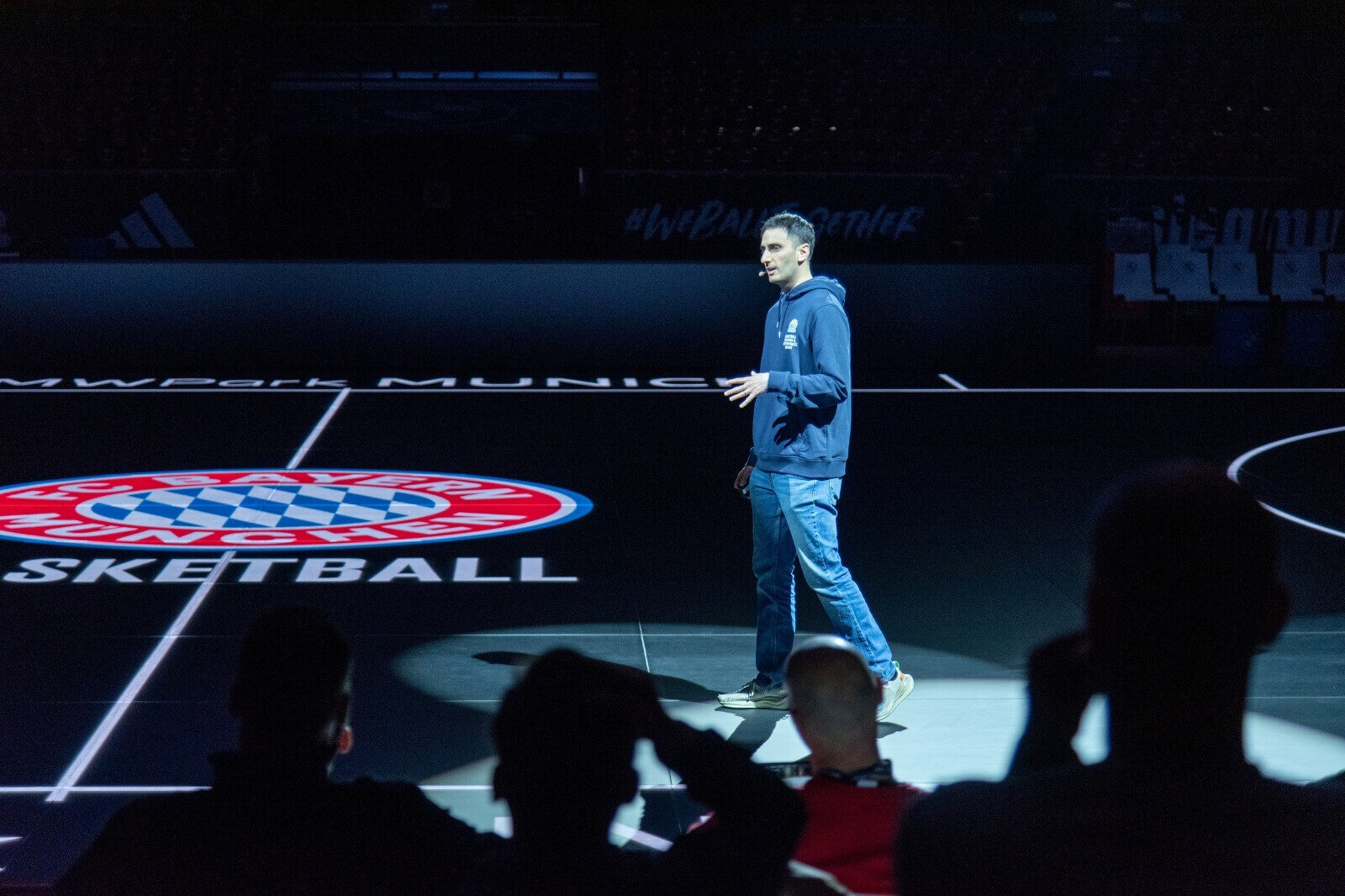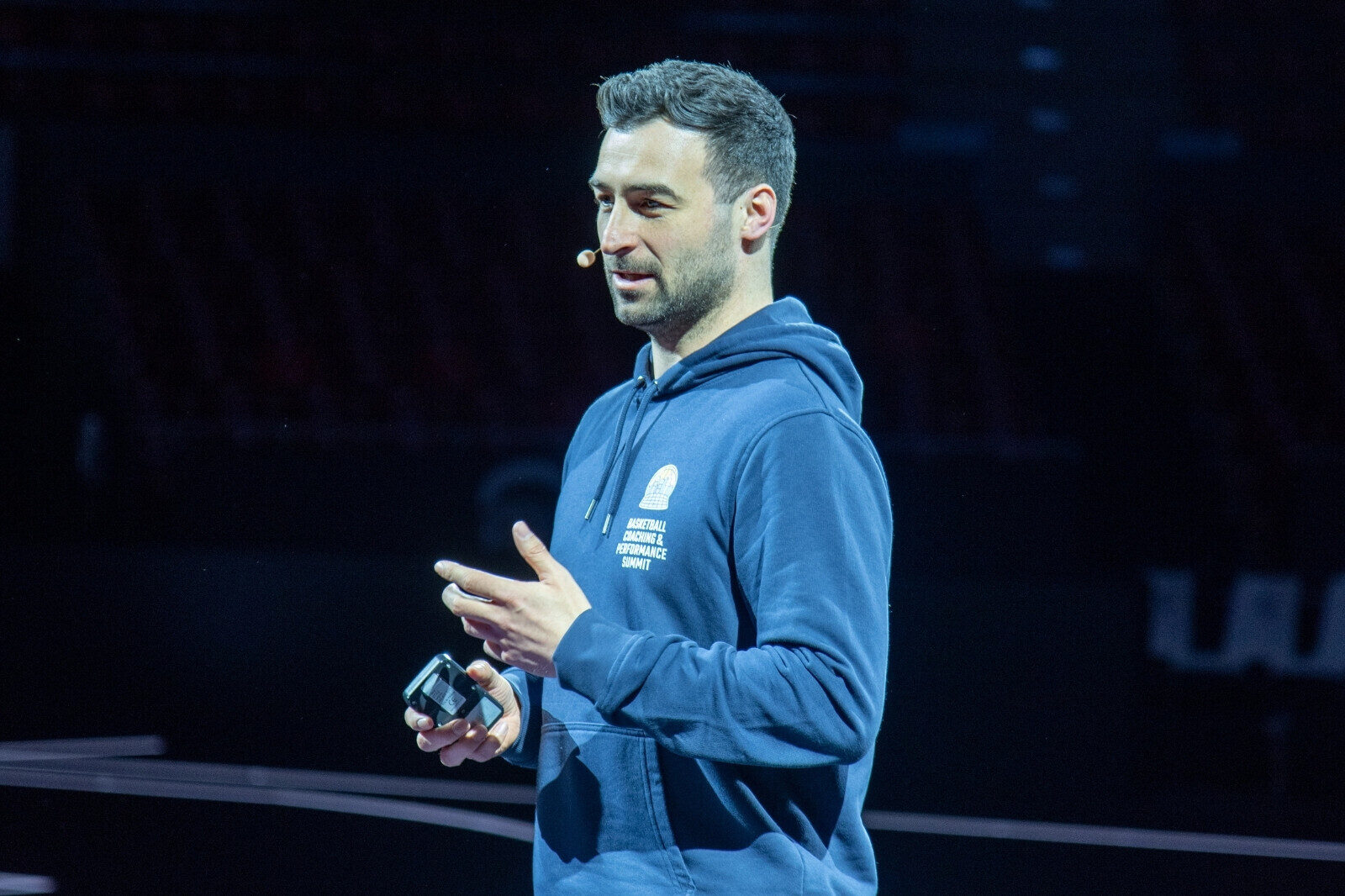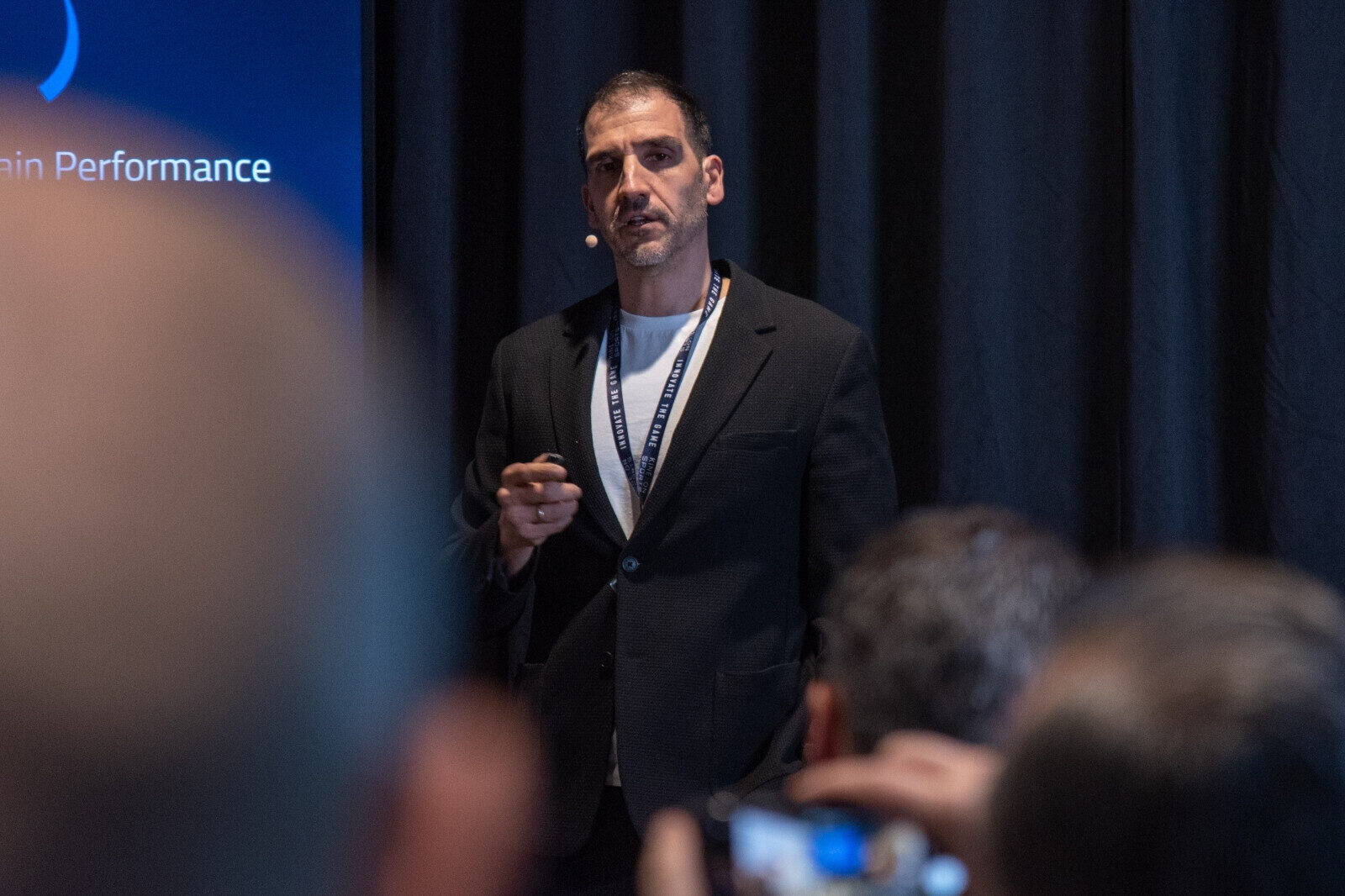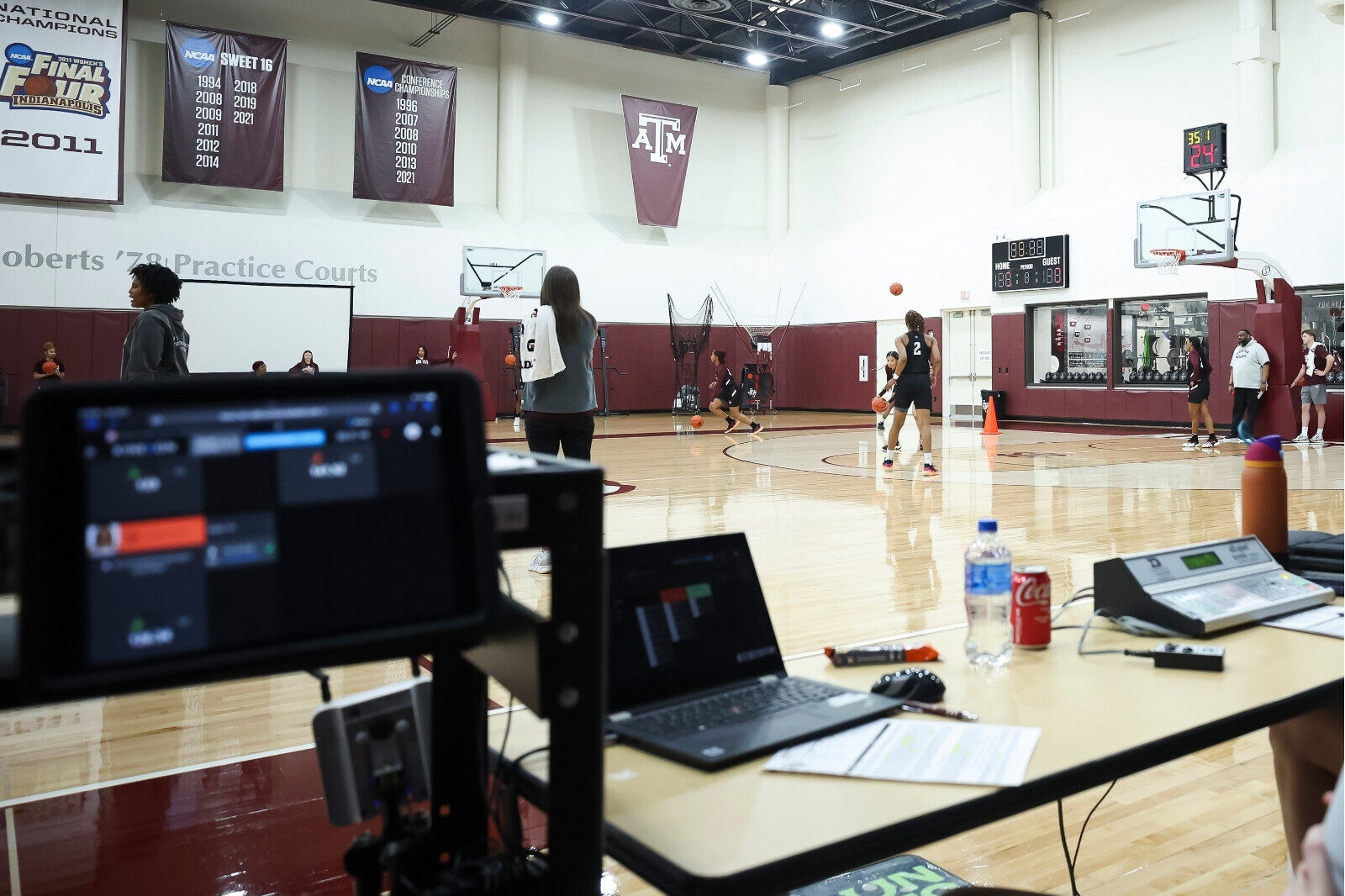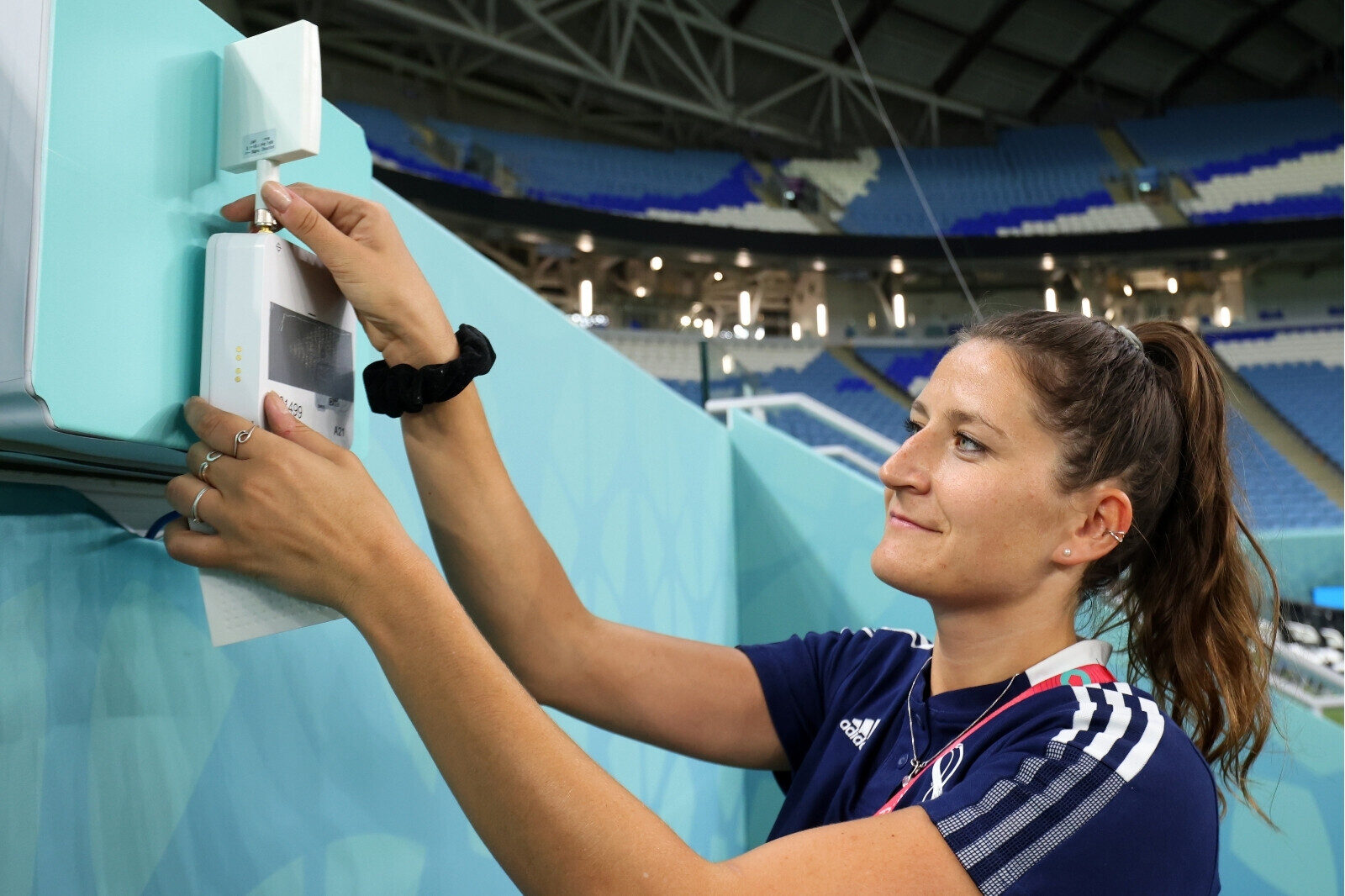How the French Basketball Federation Uses Basketball Datasets to Identify Talent and Maximize Youth Development
Sports technology is taking over the French Basketball Federation’s (FFBB). At the Institut National du Sport, Performance Specialist Yannis Irid and his team are using KINEXON’s PERFORM IMU und LPS to develop young players, prevent injuries and tailor training plans to their needs.
Irid, who is also conducting a PhD thesis in collaboration with the FFBB and the Institute of Biomedical Research and Sports Epidemiology, gives insights into the process and explains how KINEXON also helps in talent evaluation.
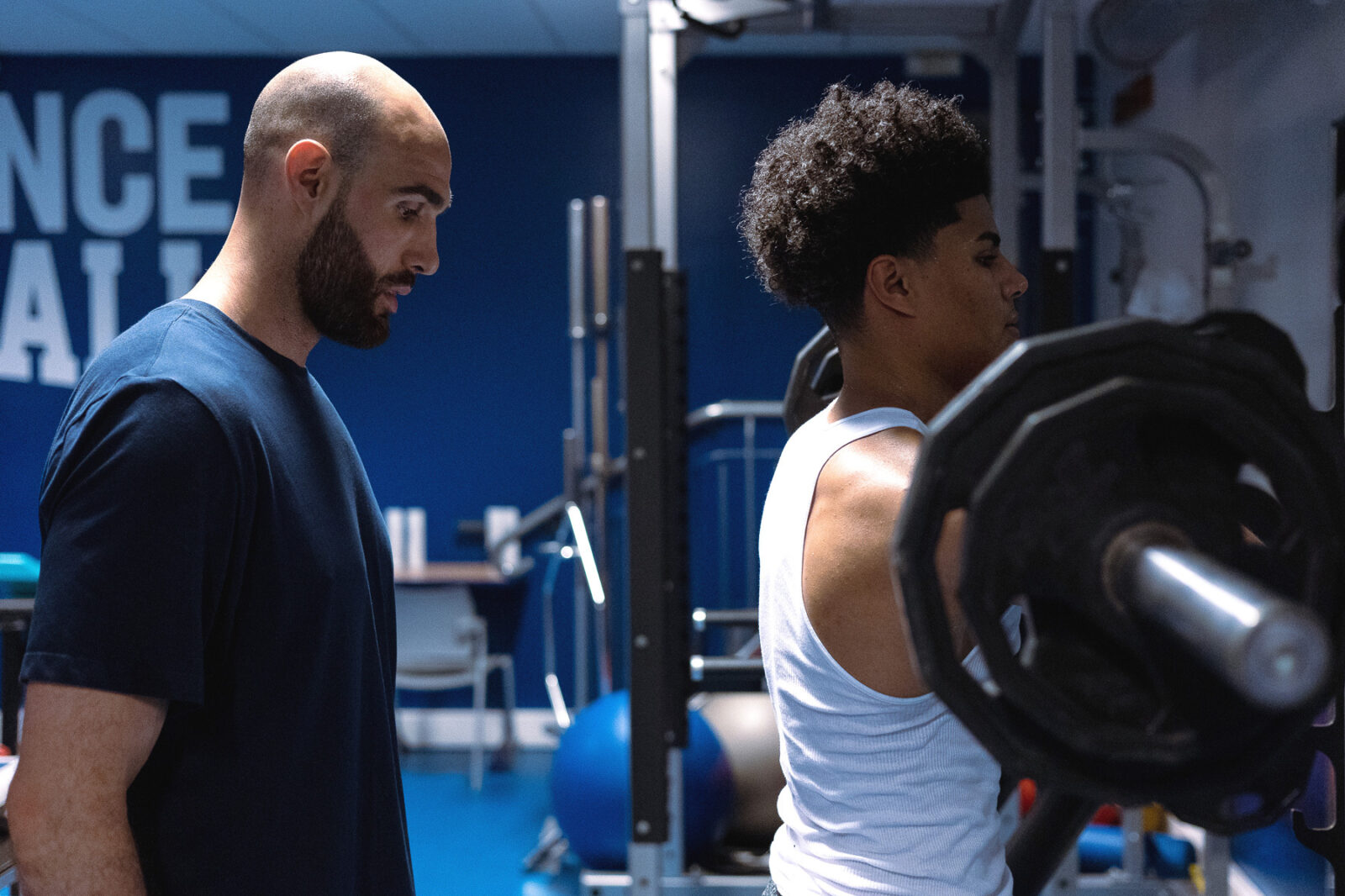
Former and current NBA stars like Tony Parker, Boris Diaw and Evan Fournier among the INSEP (the National Institute of Sport Expertise) alums may function as a glowing example. Yet, objectively identifying youth players with exceptional talent and potential to turn pro – eliminating subjective bias – is a massive challenge for coaches and performance staff.
As only some make the big step after graduating from the French training institute, young athletes receive an athletic and academic education. Tight schedules and immense workloads are standard.
To master those challenges, INSEP’s basketball department implemented KINEXON’s LPS and IMU, the stationary and the mobile solution, in fall 2022 – the goal: quantifying loads and providing continuity. Additionally, INSEP was looking for a system for home games and training sessions, as well as one that offers maximum flexibility and mobility during away games and training camps with the French national team.
Want to learn more about KINEXON’s tracking solutions?
Using Sports Technology to Develop Players
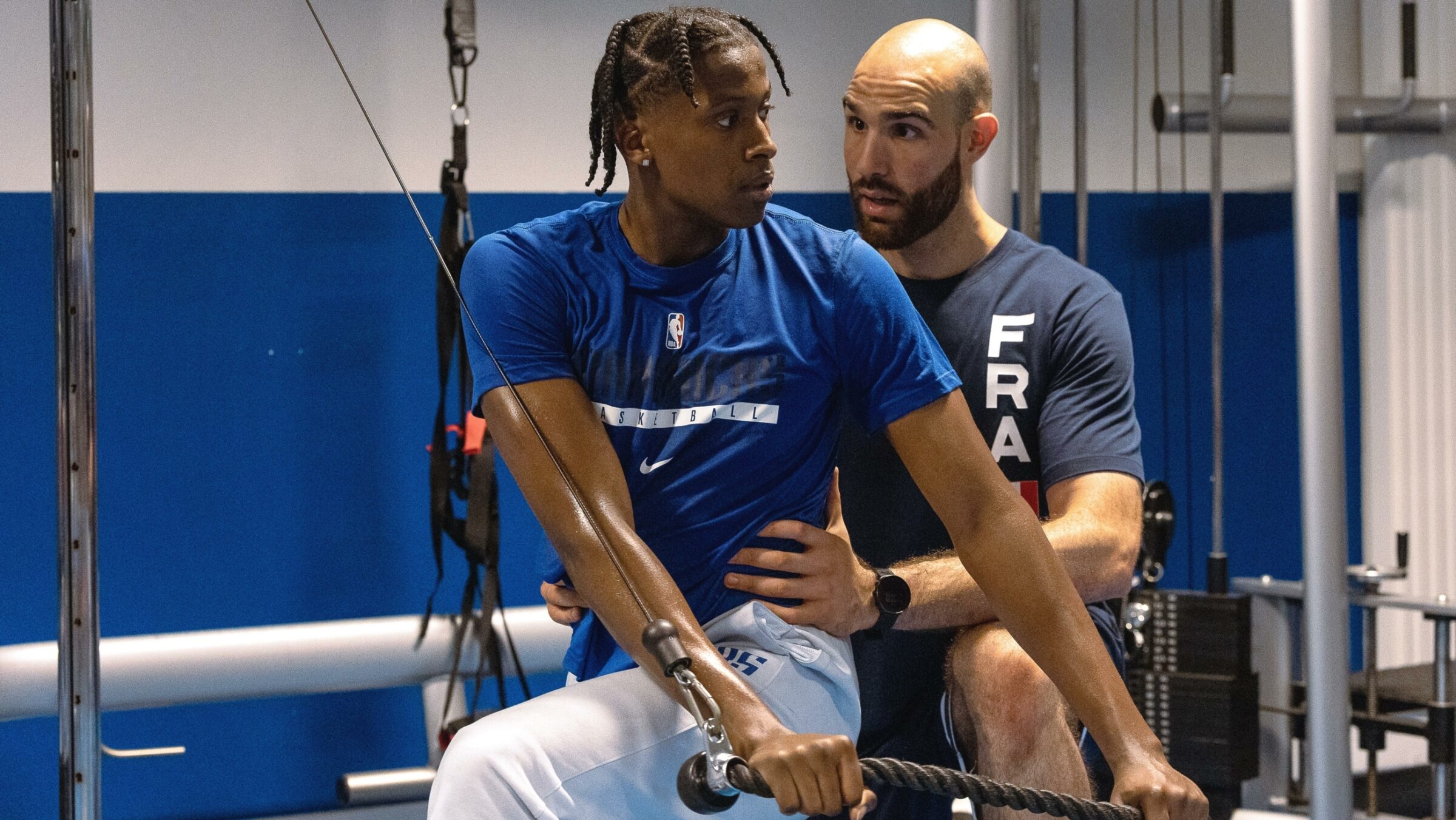
FFBB Performance Specialist Yannis Irid explains how the FFBB uses KINEXON’s PERFORM LPS and IMU to evaluate and develop talent, prepare young players for the competitions, and prevent injuries.
Yannis, you started using KINEXON’s PERFORM LPS and IMU in 2022. What do these technologies help you with?
Yannis Irid: The KINEXON devices enable us to quantify external loads and provide continuity when we play away. That allows athletes and coaches to observe performance objectively. Ultimately, we can monitor athlete fatigue, adjust training schedules, and reduce the risk of overuse injuries.
Additionally, we can tailor training to the athlete’s individual needs and goals, optimize performance, and prepare athletes for competition by gradually increasing their workload and simulating the competition demands.
How do you use the data?
Irid: First, we objectively monitor an athlete’s performance, including physical fitness. By tracking progress over time and identifying areas for improvement, we try to help athletes reach their full potential. Monitoring injury rates and risk factors allows us to develop injury prevention programs and identify athletes who may be at a higher risk of injury.
Additionally, we develop personalized training programs based on data analysis of each athlete’s strengths and weaknesses. We can even use data to identify and develop talent early, enabling us to spot athletes with the potential to become elite performers.
Do you have an example?
Irid: Sure. I can implement “top-up” conditioning sessions to compensate for substitutes’ limited match-play exposure. That is valuable for reducing injury risk and augmenting positive physical adaptations.
Sports Data That Stands Out

What are five areas where FFBB benefits from using KINEXON’S PERFORM IMU & LPS?
- Accurate measurement of movement: While IMU sensors provide precise data for acceleration, velocity, and position, LPS adds high-precision positioning data to track athletes’ movement in a three-dimensional space.
- Objective performance monitoring: By tracking external load with IMU and LPS, we can objectively measure an athlete’s training and competition workload. We can monitor fatigue and training progression and make informed decisions about adjusting schedules.
- Injury prevention: Monitoring external load with both systems can help us identify periods of high load that could increase the risk of injury. By adjusting external load management, we can reduce the risk of overuse injuries and improve athlete health and longevity.
- Personalized training programs: We can develop personalized training programs tailored to each athlete’s individual needs and goals, which can optimize performance and reduce the risk of injury.
- Competition preparation: Using IMU and LPS can enable us to prepare players by gradually increasing their workload and simulating competition demands. That can help athletes perform at their best during competition.
Sports Data Analytics Provide Advantages
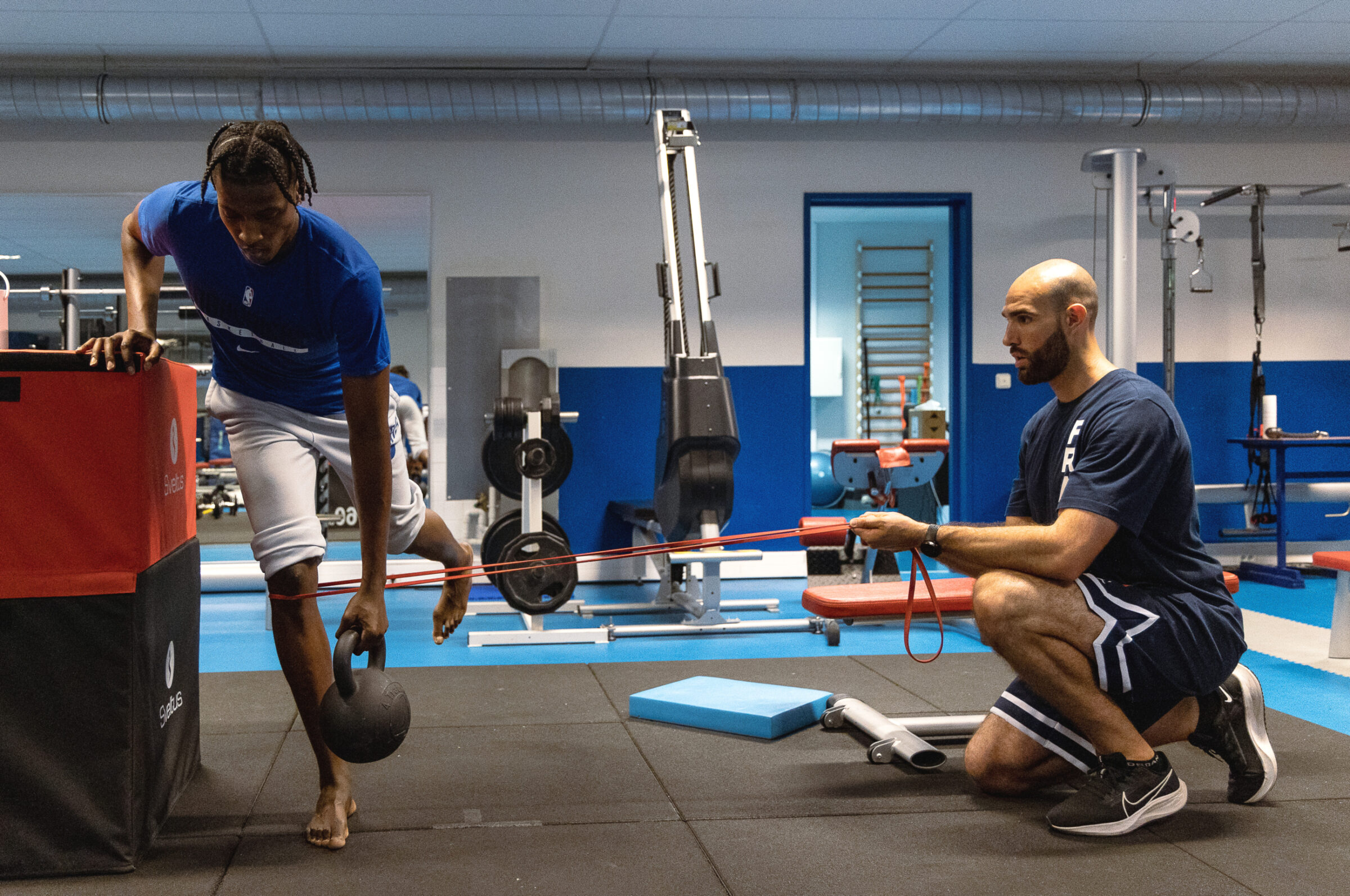
As a performance coach and sports scientist, where do you see the main advantages of working with data?
Irid: For one, they provide objective insights into athlete performance: the groundwork for building an evidence-based approach to training and performance management, tracking athlete progress, identifying patterns and trends, and making data-driven decisions.
Are you also building synergies between the senior and junior teams?
Irid: We also collect data on pro athletes playing for the French national team to identify talent and create benchmarks based on specific positions. That can help us identify players who have the potential to become elite athletes.
By analyzing individual data on each player’s performance, such as physical attributes, technical skills, and tactical awareness, we can create benchmarks for each position and use them to evaluate the performance of individual players and the team.
What are specific game demands in basketball, and how do you try to prepare your players to match them as best possible?
Irid: Basketball is an intermittent sport that requires players to repeatedly perform high-intensity actions, such as changes of direction and cutting, changes of speed over short distances, contacts like post-ups, screens, and box-outs, as well as run-to-jump actions. They all occur between locomotor demands like standing, walking, running, and sprinting.
As a result, it’s a highly demanding sport, both mechanically and physiologically. We strive to expose our athletes to the intensities they will face during competition. In close collaboration with our technical staff, we regularly replicate game-like intensities during specific training phases. That reduces the likelihood of being caught off guard during a game and minimizes the risk of injuries.
KINEXON PERFORM provides many different metrics. Which ones do you use most frequently and why?
Irid: Total distance, which serves as a volume indicator, and relative distance (distance/duration), which helps us measure intensity, are very relevant to us. We also closely monitor players’ time and distance in specific speed zones, including their relative percentages. Another critical metric is high-intensity actions, which include metrics related to acceleration, deceleration, and jumping.
In the context of my PhD, I delve deeper into the analysis and relationships between those variables and their impact on overall performance. This allows us to gain a more comprehensive understanding of the data and how we can use it to optimize player development and performance.
Can you give an example of how you use a specific metric and which advantage that presents?
Irid: Let’s take high-intensity actions, usually referred to as distance, time, and/or counts of accelerations and decelerations. By tracking these high-intensity actions during training and games, we can get an idea of the physical demands that basketball players face during gameplay and how they adapt to these demands.
If we notice a player having a low count of high-intensity actions during a game, he may not be as physically engaged as we would like. That could be due to several factors, such as poor positioning or a lack of energy, which we can address through targeted coaching and training interventions.
On the other hand, if we see a player with a high count of high-intensity actions, they may be pushing themselves too hard and increase the risk of injury. In that case, we could adjust their training load or give them more time to rest and recover.
The Future of Player Tracking in Basketball

What are four basketball-specific metrics Yannis Irid hopes for in the future?
- Shot Quality: Evaluate the quality of a shot attempt based on factors such as distance, defender proximity, and shot location to understand a player’s shooting efficiency better.
- Defensive Impact: Quantifying a player’s defensive impact on the game, including metrics such as steals, blocks, and defensive rebounds, as well as more advanced metrics like defensive real plus-minus.
- Pick-and-Roll Success: Measuring the success rate of pick-and-roll actions for offensive and defensive players, considering factors such as usage rate, points per possession, and turnover rate.
- Fatigue Analysis: Evaluating the effect of fatigue on a player’s performance throughout a game, considering factors such as heart rate, distance covered, and shot accuracy.
For more insights, download our guide: “March Madness: How To Get Ready for the Hottest Time of the Year – Insights From the NCAA“




